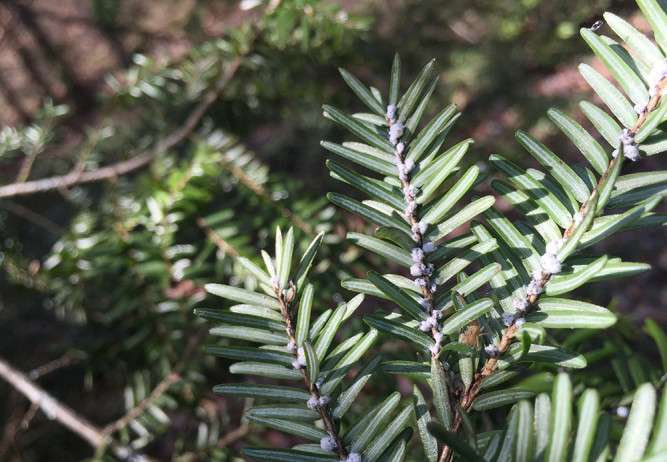Invasive pest's winter activity possibly linked to climate change

The early hatching of insect eggs from an invasive pest threatening millions of trees in the eastern United States may be linked to climate change, according to new findings from UT.
Researchers Christy Leppanen and Daniel Simberloff recently found hemlock woolly adelgid eggs hatching in December—outside of their normal spring and summer life cycle. The discovery could shed light on why the pest is invasive and reveal why management efforts have failed.
Until now, scientists have documented eggs hatching only from March through July.
"We are caught by surprise when pests break the rules," said Leppanen, a postdoctoral research associate. "Reproduction outside of recognized cycles can counteract management, because control relies on accurate predictions of pest reproduction and knowing what life stages are present so they can be targeted at the most effective times."
Leppanen works in the lab of Simberloff, the Nancy Gore Hunger Professor of Environmental Studies in the Department of Ecology and Evolutionary Biology.
The hemlock woolly adelgid is a sap-feeding insect native to Asia. It was first discovered in the eastern United States in 1951, and it has since devastated native hemlock populations.
Leppanen and Simberloff discovered the eggs hatching after record high temperatures in East Tennessee in December. The unseasonably warm temperatures were attributed to global climate change and El Nino conditions. By tracking development, the researchers determined that this winter's hemlock woolly adelgid populations reproduced earlier and more quickly than previously documented.
Temperature influences the rate of insect development, distribution, and abundance. Higher temperatures can shorten life cycle stages, sometimes increasing the number of generations each year. More generations create more offspring and may increase insect populations.
Events like this challenge current hemlock woolly adelgid control efforts. Those efforts have not yet proven successful, possibly because the pests' reproduction has not been sufficiently synchronized with their predators' cycles.
Leppanen and Simberloff visited only a few sites in Tennessee, but hemlock woolly adelgids have been found from Georgia to Maine. They concluded that similar activity has likely occurred before, which may have overwhelmed predators, such as beetles, that were deliberately introduced.
After the discovery, Leppanen sent a mass email to a group of hemlock woolly adelgid researchers and managers in late December and received many out-of-office replies.
"Could similar events in other years have gone unrecorded because hemlock woolly adelgid life cycles were not synchronized with researcher activity periods?" Simberloff asked.
Provided by University of Tennessee at Knoxville


















